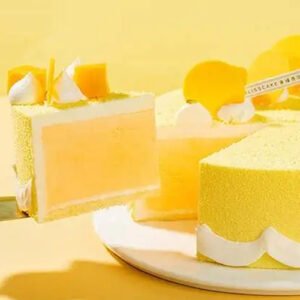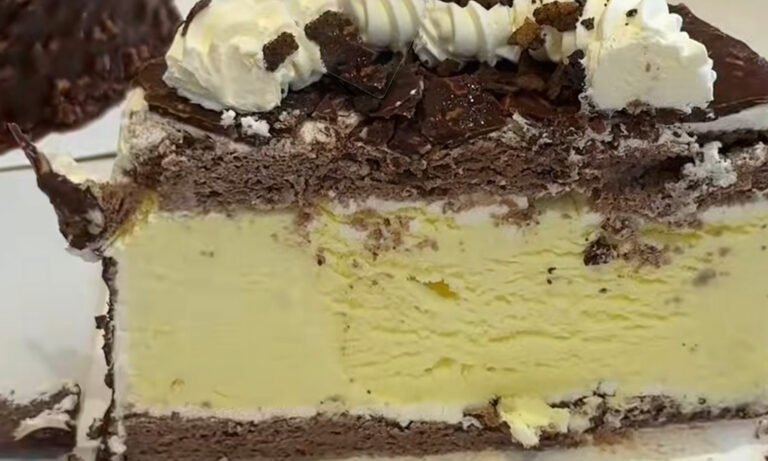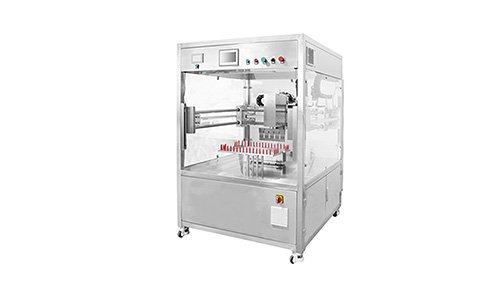Ultrasonic Ice Cream Slicer for Frozen Dessert Cutting
Publish Data:2025.7.9 Author: Hyusonic
Producing high-quality ice cream cakes and other frozen desserts demands precision, hygiene, and efficiency. Traditional manual methods often fall short, leading to challenges like cross-contamination, low yield, and limited versatility. This article explores the limitations of conventional cutting techniques and highlights how ultrasonic ice cream slicers are transforming the industry, offering a superior solution for ice cream cake slicing and beyond.

The Pain Points of Traditional Ice Cream Cake Cutting
Before the advent of ultrasonic technology, dessert manufacturers faced significant hurdles:
Hygiene Headaches: Manual knives and wires are notorious for accumulating sticky residues from ingredients like caramel and marshmallow, making frequent, thorough cleaning a labor-intensive necessity. This constant battle against cross-contamination is especially critical in medical-grade dessert production or facilities adhering to strict food safety standards.
Inefficient & Error-Prone: Relying on manual labor for ice cream cake slicing is inherently time-consuming and prone to inconsistencies. Consider the stark difference in yield: traditional wire cutting often achieves only an 87.5% yield rate, while ultrasonic ice cream slicers consistently reach an impressive 99.2%. This translates directly to reduced waste and increased profitability.
Limited Versatility with Frozen Products: Conventional tools struggle immensely with frozen desserts held at their ideal serving temperatures (-15°C to -20°C). Attempting to cut cold, brittle cakes often results in cracking and structural damage. Thawing them to room temperature, while making them easier to cut, compromises their delicate texture and freshness – a significant drawback for premium products.

The Game-Changer: Advantages of Ultrasonic Cutting for Ice Cream Cakes
Ultrasonic cutting technology addresses these challenges head-on. By utilizing high-frequency vibrations (20-40kHz), these specialized ice cream slicers soften materials at a molecular level, minimizing friction and allowing for incredibly clean cuts. Here’s why they are a game-changer for ice cream cake slicing:
Unmatched Precision and Flawless Aesthetics: The zero-pressure cutting mechanism of ultrasonic ice cream slicers ensures smooth, deformation-free slices every time, even for multi-layered or highly sticky cakes. For instance, leading ultrasonic machine manufacturers like Hyusonic boast precision levels of ±0.5mm, a critical factor for premium desserts where flawless presentation is paramount.
Superior Hygiene and Enhanced Food Safety: Ultrasonic ice cream cutting machines typically feature FDA-approved titanium alloy blades that resist bacterial growth. The low-temperature operation (below 50°C) also helps preserve the nutritional integrity of the ingredients. This is especially vital for products requiring specific certifications like kosher, halal, or organic, where maintaining product purity is non-negotiable.
Exceptional Speed and Scalability for Production: Imagine processing 300 to 600 ice cream cakes per hour! Ultrasonic slicers deliver this level of efficiency. When integrated with automated systems, they can reduce labor costs by as much as 50% compared to manual methods. For large-scale operations, the seamless integration of machines like the Hyusonic ultrasonic cutting system with conveyor belts allows for continuous, high-volume production.
Unparalleled Material Flexibility: From rock-hard frozen treats to delicate mousses, ultrasonic cutting technology excels across a diverse range of applications, making it an incredibly versatile ice cream slicer:
Freezer-Friendly: Effortlessly cuts through ice cream cakes at temperatures as low as -20°C without the need for thawing, preserving their original texture and flavor.
Sticky Ingredient Mastery: Completely eliminates clumping and sticking issues when cutting cakes filled with challenging ingredients like caramel, nougat, or fruit purees.
Complex Shape Support: Easily accommodates and precisely cuts intricate designs, whether you need triangular, hexagonal, or custom-shaped ice cream cake slices.
Choosing the Right Ultrasonic Ice Cream Cake Slicer for Your Business
Selecting the optimal ultrasonic ice cream cake slicing machine depends on your specific production scale, budget, and operational needs.
Key Features to Prioritize:
Cutting Capacity: Small-to-medium bakeries might find tabletop models (starting around ¥50,000) sufficient, while large industrial factories require robust systems capable of processing over 600 cakes per hour.
Automation Levels: Look for advanced machines with AI-driven parameter adjustment, such as HyusonicUltrasonic’s smart systems, which automatically adapt to the cake’s density and shape for optimal cutting.
Ease of Cleaning: Models designed with removable, dishwasher-safe parts significantly simplify sanitation processes, contributing to overall operational efficiency and hygiene.
Understanding Cost and Return on Investment (ROI): While industrial ultrasonic ice cream slicing systems represent a significant investment (¥250,000−¥800,000 or approximately $35,000−$113,000), their ability to drastically reduce waste and labor costs leads to a rapid return on investment. Many large manufacturers report payback periods as short as 18 months, highlighting the long-term financial benefits.
Conclusion: Elevate Your Ice Cream Cake Production
Ultrasonic cutting is more than just a technological advancement; it’s a transformative solution for the dessert industry. By investing in a high-quality ultrasonic ice cream slicer, businesses can achieve unmatched precision, maintain the highest hygiene standards, and significantly boost their operational efficiency. Whether you’re a small artisan bakery aiming for perfect ice cream cake slices or a large-scale manufacturer looking to streamline mass production, the right ultrasonic cutting machine will undoubtedly elevate your product quality, reduce costs, and drive sustainable growth in a competitive market.

